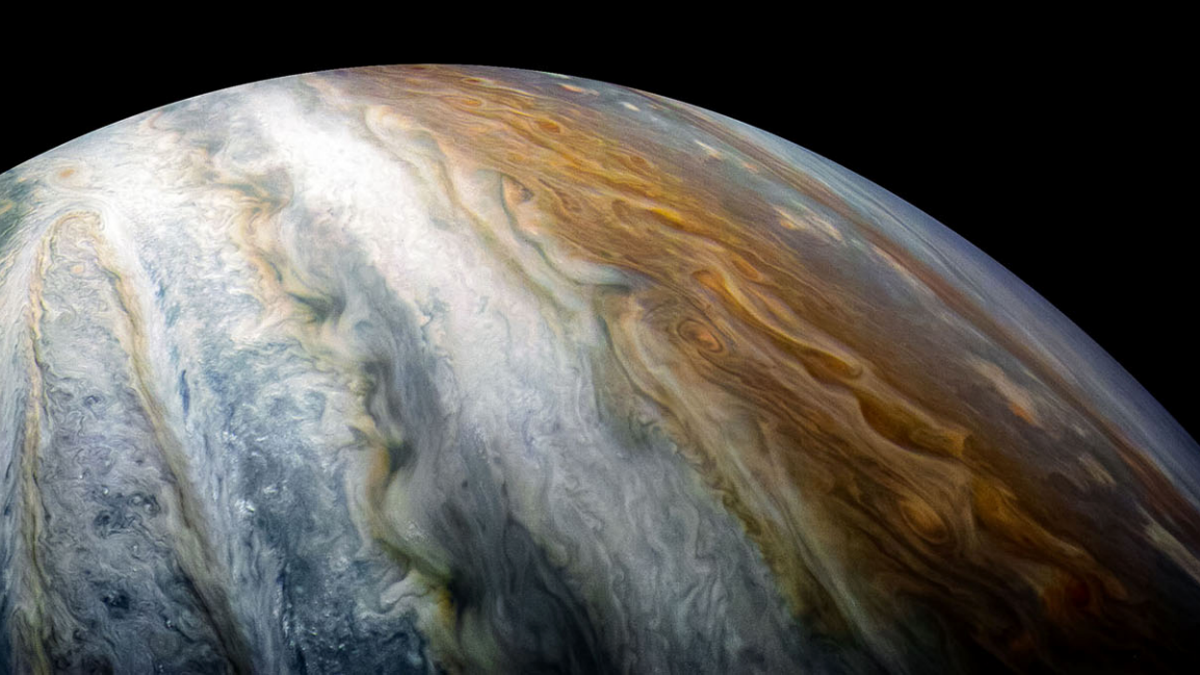
The colorful cloud belts of Jupiter's southern hemisphere dominate this stunning photo from NASA's Juno spacecraft in orbit around the gas giant released on Jan. 12, 2018. Juno captured the image on Dec. 16, 2017. It was processed by citizen scientist Kevin M. Gill. (NASA/JPL-Caltech/SwRI/MSSS/Kevin M. Gill)
The ribbons of multicolored gas that make up Jupiter's atmosphere are on display in two new images from NASA's Juno probe.
In one of the new images, the ribbons of gas that wrap around Jupiter's equator are shown in stunning resolution, revealing detailed structures in the clouds. With this level of detail, the bands of gas start to resemble solid materials: An orange-tinted region looks like a knotty wood plank, and a speckled, whitish-blue layer looks like a sandy river bottom.
In the second image, the planet's south pole is rendered in bright colors that highlight how the bands of gas remain separate from each other, despite their stormy nature.
The new images were captured by the JunoCam instrument aboard the Juno spacecraft, which makes a close flyby of Jupiter every 53 days. Raw data from the JunoCam is uploaded to the instrument website, and is available to citizen-scientists for processing. The results have been both scientific and artistic. Both images are color-enhanced, so they are not necessarily representative of what would be visible with the naked eye.
The images, which were featured on the main website for NASA's Jet Propulsion Laboratory, were taken on Dec. 16, 2017, less than an hour apart. However, the image of Jupiter's equator was taken from a distance of about 8,453 miles (13,604 kilometers) from the tops of clouds; the image of the south pole was taken at a distance of about 64,899 miles (104,446 kilometers) from the cloud tops.
Original article on Space.com.
